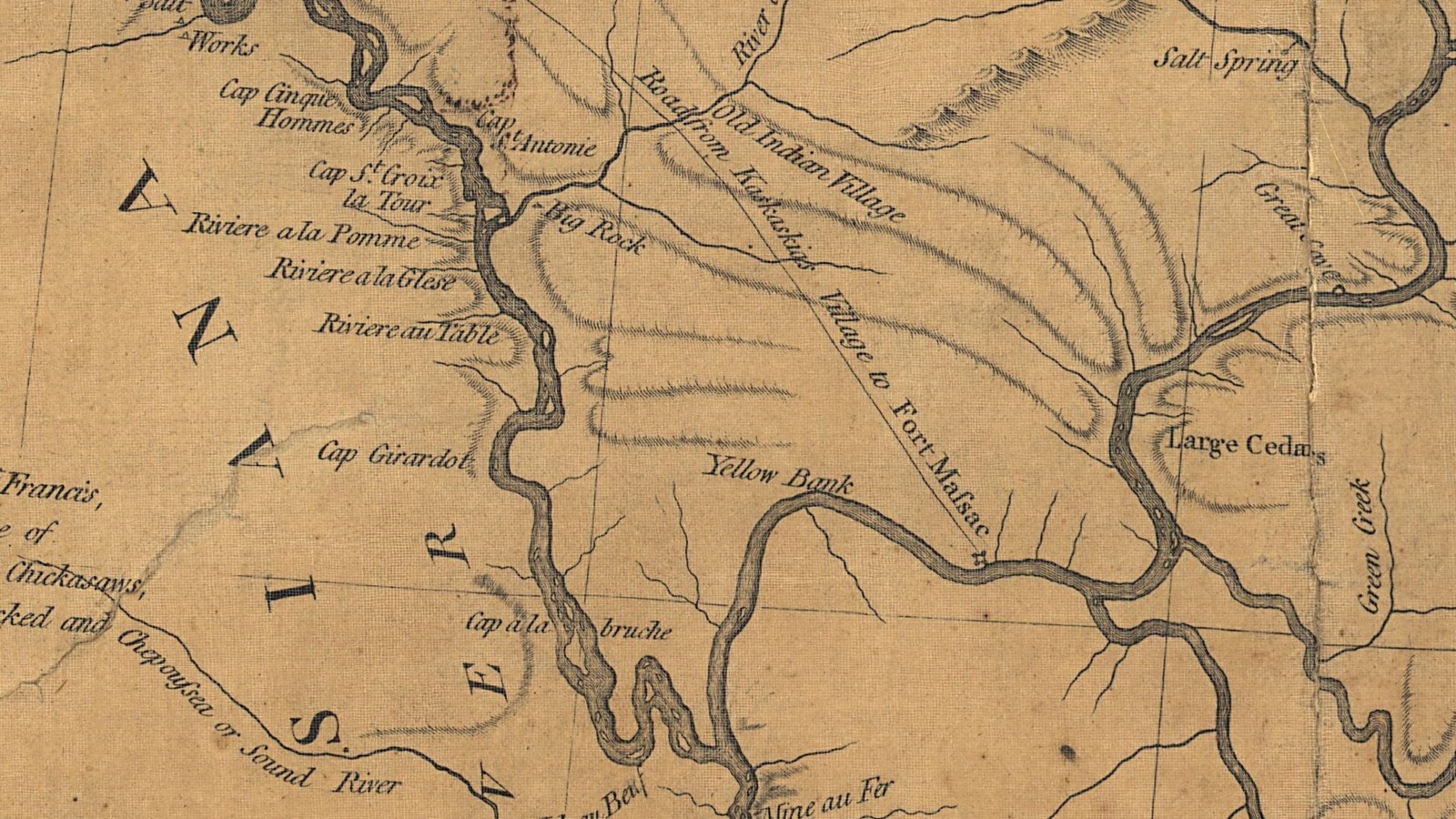Last updated: December 13, 2023
Place
Fort Kaskaskia

Library of Congress, Geography and Map Division
Picnic Table, Playground, Primitive Campsites, Scenic View/Photo Spot, Toilet - Vault/Composting
Lewis and Clark NHT Visitor Centers and Museums
This map shows a range of features associated with the Lewis and Clark National Historic Trail, which commemorates the 1803-1806 Lewis and Clark Expedition. The trail spans a large portion of the North American continent, from the Ohio River in Pittsburgh, Pennsylvania, to the mouth of the Columbia River in Oregon and Washington. The trail is comprised of the historic route of the Lewis and Clark Expedition, an auto tour route, high potential historic sites (shown in black), visitor centers (shown in orange), and pivotal places (shown in green). These features can be selected on the map to reveal additional information. Also shown is a base map displaying state boundaries, cities, rivers, and highways. The map conveys how a significant area of the North American continent was traversed by the Lewis and Clark Expedition and indicates the many places where visitors can learn about their journey and experience the landscape through which they traveled.
Indigenous communities that were part of the Illinois Confederation had hunted and farmed these lands for millennia. French settlers established a trading post at Kaskaskia in 1703, near an existing Illiniwek village, and then built an earthworks fort in 1759. The French officially ceded the land to the British in 1763, but French-speaking people remained. After the American Revolutionary War, the British transferred the Illinois Country, including Kaskaskia, to the United States. Indigenous people living here had not consented to these land transfers between colonial powers.
When Lewis arrived in 1803, the civilian population at Fort Kaskaskia was still largely French speaking, but the U.S. military controlled the fort. Many Shawnee, Delaware, and other Indigenous people lived nearby.
Lewis recruited ten members of the Corps from Kaskaskia: John Boley, John Collins, John Dame, Patrick Gass, John Ordway, Ebenezer Tuttle, Peter Weiser, Isaac White, Alexander Hamilton Willard, and Richard Windsor. These men ranged in age from nineteen to thirty-two years old, and most were hired as laborers. Only two of the men were ranked higher than privates: Ordway was recruited as a sergeant. Gass, a carpenter, would be promoted from private to sergeant after the death of Charles Floyd.
Lewis also hired French and Métis engagés. (Métis is a term for Indigenous people who also have French or other European heritage, and engagés was a common name for river navigators in the North American fur trade, many of whom spoke French.) These engagés operated the boats that ferried new recruits up the Mississippi River to Camp Dubois. Some of these men stayed with the expedition to Fort Mandan. Many of the men hired as engagés were of multicultural parentage, with French and Indigenous roots.
About this article: This article is part of a series called “Pivotal Places: Stories from the Lewis and Clark National Historic Trail.”
